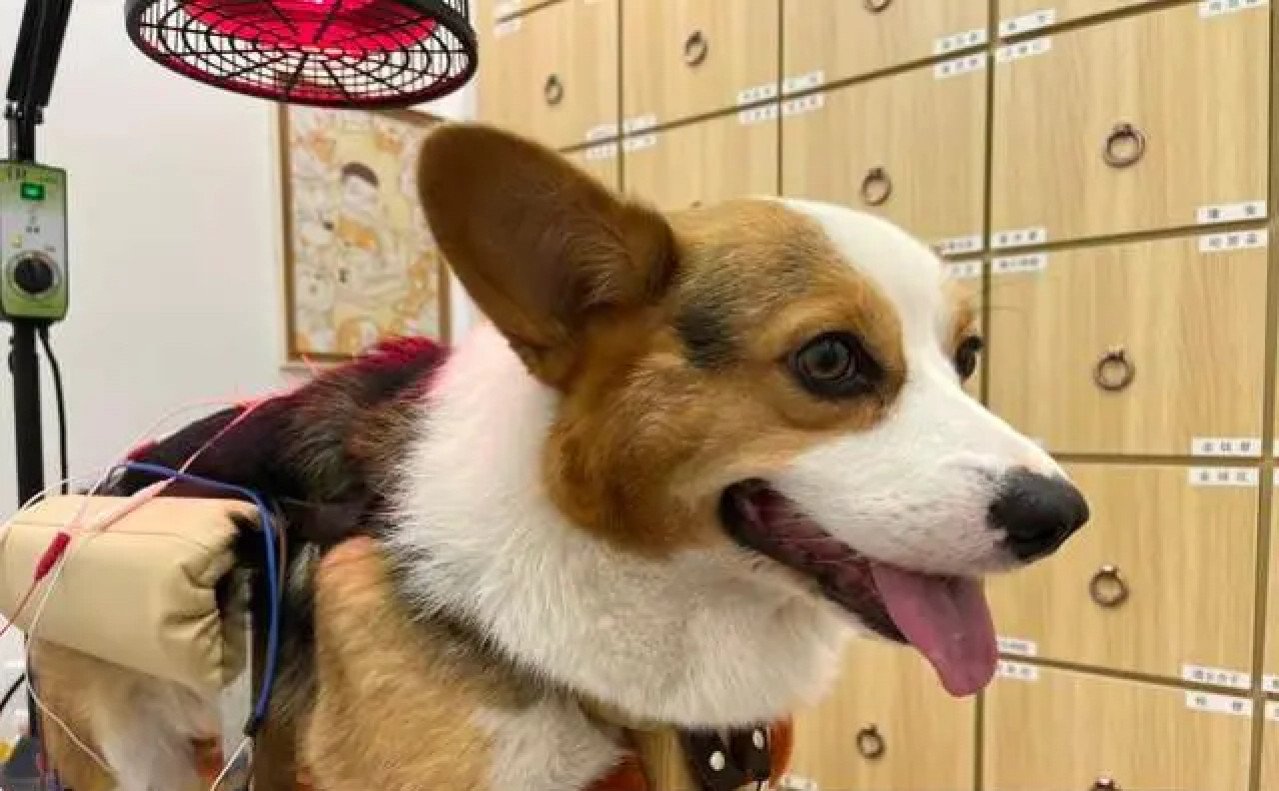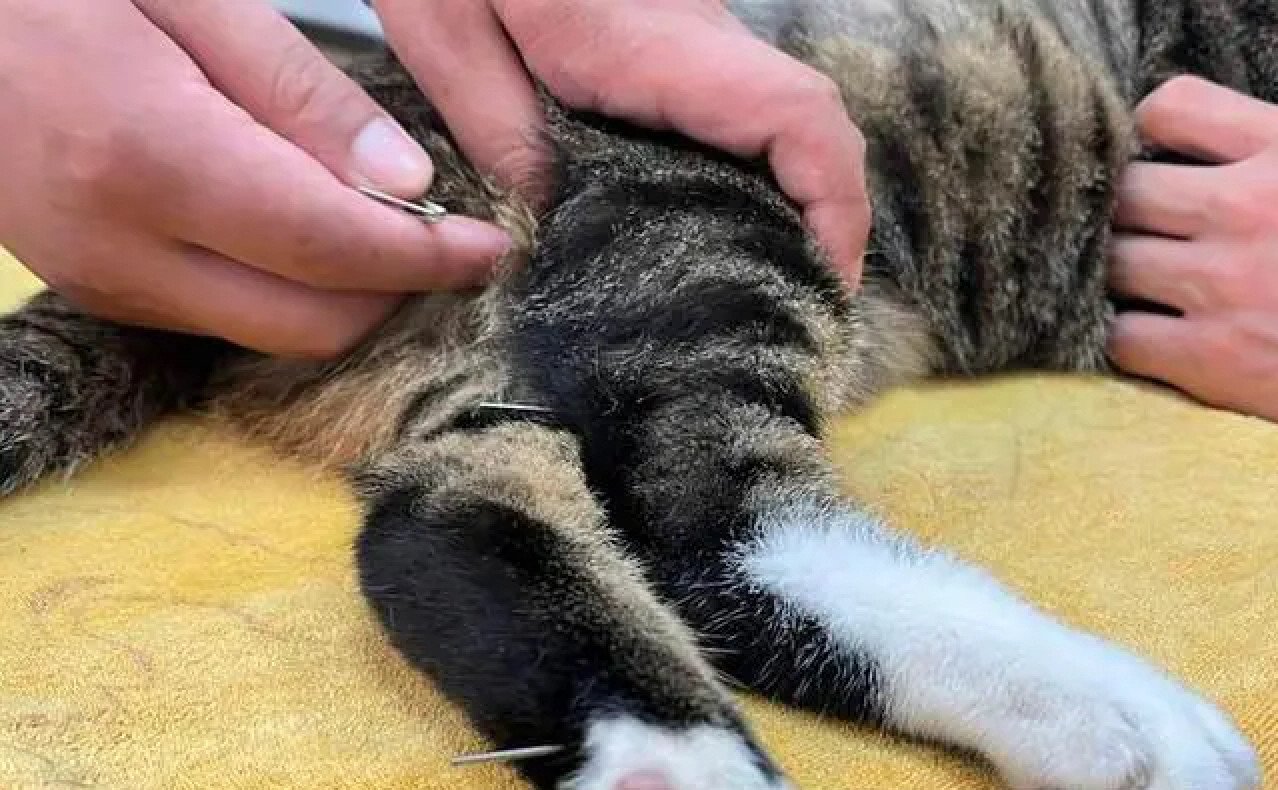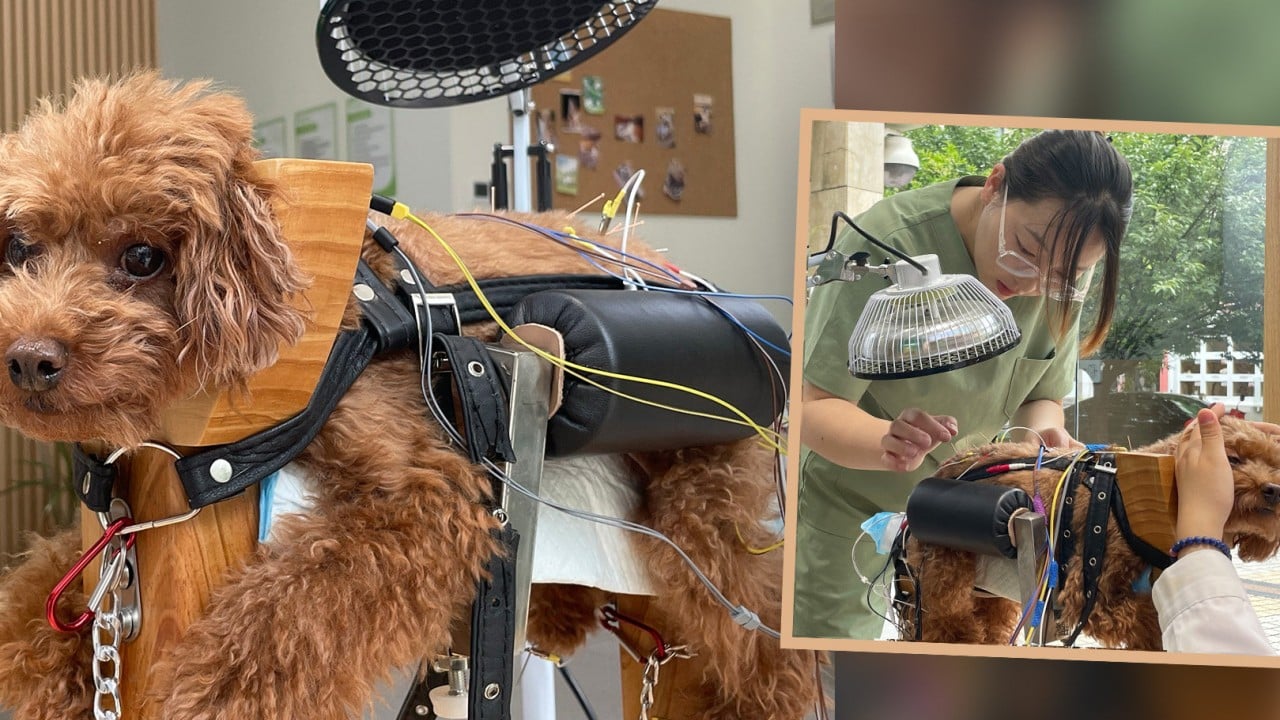While traditional Chinese medicine (TCM) treatments such as acupuncture have long been applied to humans, their use on pets has only recently gathered momentum.
In specialist pet wellness centres, practitioners are increasingly applying the method to dogs and cats to cure diseases and offer a variety of health benefits.
A typical animal acupuncture session costs about 200 yuan (US$28) and provides benefits such as improving blood circulation, reducing inflammation and pain, and enhancing the immune system.

In June, a golden retriever in Yantai, Shandong province, eastern China, that was suffering from facial paralysis because of over exposure to air conditioning, showed a remarkable improvement three days after having such treatment.
Animal acupuncture has a rich history dating back to China’s Spring and Autumn period (770-481 BC) when vets studied the techniques and applied them to horses.
Today, the practice has evolved to successfully identify nearly 100 effective acupuncture points for cats and dogs, compared to more than 2,000 in the human body.
The therapy always begins with a diagnostic process involving four traditional examinations: observation, smell, questioning, and pulse-taking.
Vets assess the pet’s health by observing its nasal mucus, gums, saliva, and tongue coating, as well as smelling for abnormal odours and inquiring about the pet’s daily routines.
Unlike humans, where pulse is typically taken at the wrist, veterinary surgeons use the inner thighs of cats and dogs, or the tail for larger animals, such as horses and cows.

Once a diagnosis is made, the treatment can begin.
The pet is first gently secured in a special apparatus to keep it still, and acupuncture points are located in their skeletal and muscular structure.
Acupuncture needles are then swiftly inserted, and electrical stimulation is applied via an electronic acupuncture device.
Many pets remain calm during sessions, and some appear so relaxed they almost fall asleep. Overall, dogs tend to be more cooperative than cats.
One practitioner, Wei Jiayu, shared his most successful case, which involved curing a paralysed corgi, on the We-media platform Yitiao.
He said the pet’s owner chose acupuncture over surgery because of the cost.
After six acupuncture sessions, the dog could hop like a rabbit, according to Wei.
The approach has gained traction among pet owners for its affordability and effectiveness.

One TCM enthusiast, surnamed He, told Chengdu Daily she was eager to try acupuncture on her British shorthair cat.
“My cat previously had epilepsy symptoms, and veterinary checks can cost thousands of yuan, with surgery potentially costing tens of thousands. TCM is more economical, with an acupuncture session costing only one or two hundred yuan,” she said.
TCM for pets has sparked curiosity on social media.
“TCM is truly profound. It can even identify acupuncture points on a dog’s face. So surprising,” said one online observer.
“I’m so shocked. Is this a new career focus for us in the future?” a student of TCM for humans asked.


